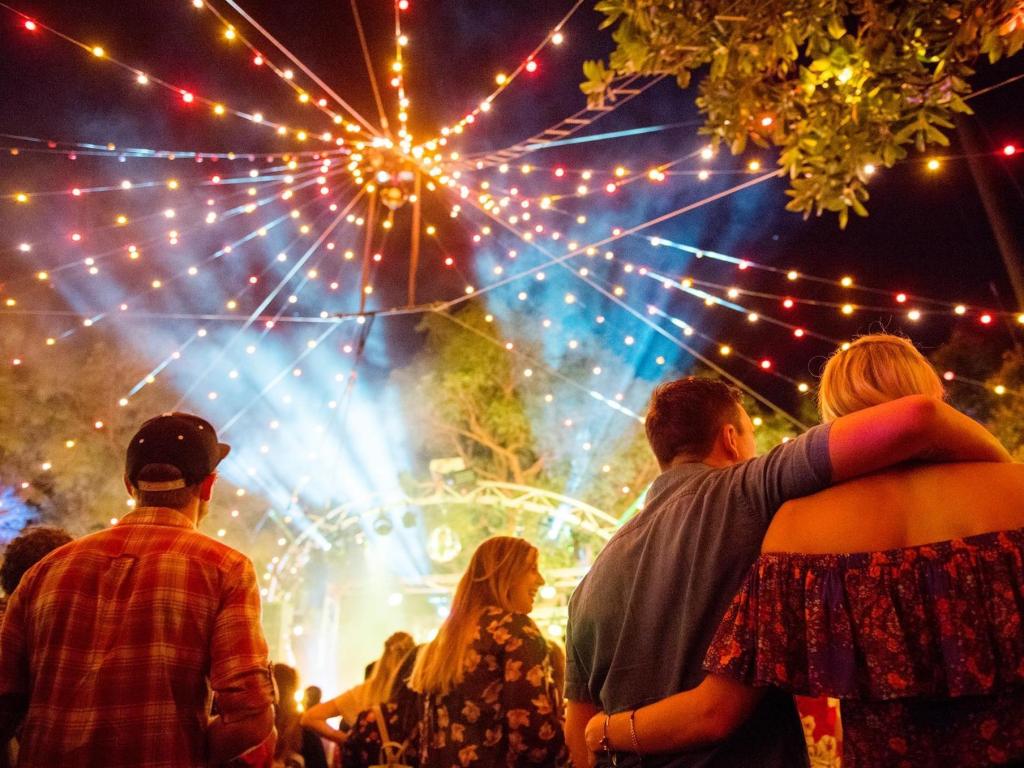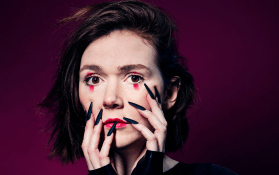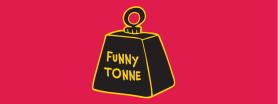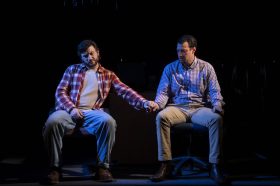Audiences enjoy a balmy night at Darwin Festival. Photo credit: Elise Derwin.
From the compact program of Junction Arts Festival through to the ever-increasing number of artists registering for our major Fringe Festivals, trying to decide what to see in an local or international arts festival can often be challenging. Even for experienced arts patrons, perusing the program without being overwhelmed can be a monumental task – let alone making hard choices about what to actually see.
Here, arts industry figures and commentators from around the country offer up their personal tips on the best way to approach a packed festival program, in order to make the most of the events on offer without succumbing to festival fatigue.
Please note: originally published in 2015, this feature has been updated with fresh perspectives and new tips to help you make the most of the impending festival season.
Felix Preval, Artistic Director, Darwin Festival (9-26 August 2018)
‘I love the process of unpacking a festival program. How I plan for it depends on whether it’s in a city I live in or one that I’m visiting. Some of my favourite festival experiences have been when visiting a city for a festival and taking a punt by committing to seeing everything I can over the two or three days that I’m there – you get a real sense of the journey the curators are trying to take their audiences on.
‘If it’s a bigger program, or a home-city festival, then I like to take the time to read and re-read the program, seeing what pops out on the first, second and third passes. The index of events is invaluable – cross referencing times and dates to pack as much in as possible, highlighter in hand. My tastes are pretty broad ranging, so I try to pick a selection of works across the genres of performance and fit smaller works and visual arts programming around the key events.
‘I love a matinee – more matinees please! – it’s wonderful to stagger out of a full-on theatre or dance work into the afternoon sun and still have the evening free to enjoy further theatre, music and late night festival activations.’
Kerri Glasscock, Sydney Fringe Festival Director (1-30 September 2018)
‘Navigating a festival guide, especially a Fringe Festival guide, can be an overwhelming task. My key tips are: look for a great image first and foremost. Artists and companies that have invested in a great image or have fantastic key creatives will always stand out from the crowd. Don’t of course rely only on that otherwise you miss out on the secret hidden treats.
‘I always read a festival guide from cover to cover. No, really I do. I’ve spent many a late night in hotel rooms planning my day ahead. I read all the show blurbs and circle the ones I’m keen on as I go through, then I hand write a short list and start checking dates and times to build up a schedule – though of course if you prefer a digital method, create a spreadsheet!
Once I have my shortlist the easiest thing to do is hop online and navigate via a date search, then you can see all the shows on one day in one place. I prefer to schedule via date and time as opposed to genre as I want to see a broad mix of works. But no matter how you plan your Fringe adventure be sure to throw in at least four wildcards – just take a punt on something you might never ordinarily chose, an artist you don’t know or just take the lottery option and open a page and the first listing you see, book tickets to!’
Simon Abrahams, Creative Director & CEO, Melbourne Fringe (13-30 September 2018)
‘There are always three key rules when approaching a festival program and if you follow them, you’ll pretty much always win.
‘Rule #1. Choose something you know you’ll love. Pick out an artist whose work you’ve seen before, or a show that’s been recommended to you, or the thing that’s got a million good reviews behind it. You can’t go wrong with a single sure fire hit. It’s probably what everyone else will see, and you’ll need to be in on the conversation. Now that’s the easy bit done, it’s time to get into the real deal.
‘Rule #2. Take a punt on discovering something new. The point of festivals is to take you out of your comfort zone, to discover something that you never would normally see, and to have new experiences. You need to find out about new artists, or look at the world differently or learn a new thing about yourself. So you need to take at least one work that is going to challenge you. And you’ve already chosen your sure fire hit, right? So this one (or ones) is about living on the edge, taking a punt and following the adventure. Personally, I sit down and read everything and simply choose the things that I think excite me most viscerally – the things that make me sit up and listen, that intrigue me, that sound like they’re exploring something super juicy.
‘Rule #3. Go see something for free. It’s often easy to overlook free programs because you usually don’t have to book for them, and so it’s easy to leave them out of your festival schedule. But it’s these events – often in public space, or visual arts events, or in a Club context – that some of the richest connections can happen. So I schedule these into my diary to make sure I’m “booked” to go at a particular time.
‘I know I said there’d be three rules but I also have a fourth, but I left it out in case any Marketing Manager in Australia had stopped reading by now, because they’ll all be shaking a fist at me when they read this. They’ll be furious. Livid. But to start with – don’t look at the website, look at a hard copy brochure. (I’m often trawling websites for PDF versions of the hard copy brochure on launch night). The reason for this is simple – Artistic Directors present their programmes carefully in their brochure, thinking about hierarchy and messaging and how it all fits together curatorially and thematically. This usually gets thrown out the window on a website, which often filters by date and artform and other practical ways to find information. But I often miss the things that really matter. I don’t care about when or where or how much to start with – I want to know why a work has been selected and what it says about the world around us. And call me old fashioned, but I reckon it’s best done in an old school brochure format. Once you’ve decided – get online and filter those events and book those tickets.’
Heather Croall, Director & CEO, Adelaide Fringe (15 February – 17 March 2019)
‘Initially I like to read up on what the must-see shows are and make sure those are on my list, but I always make sure I leave plenty of room for the unexpected.
‘Especially when there are a lot of shows being presented for the first time, it can be hard to tell in advance what the most ground-breaking and surprising events are going to be.
‘And that’s something I really value in a festival – being challenged by a work and inspired by a performance. Anything that’s exploring a particular social issue or raising awareness about something that we don’t usually talk about will usually be a favourite of mine.
‘Word of mouth is a really important part of deciding what shows to see — everyone is asking everyone they meet for tips on things they’ve seen.
‘Navigating a festival is also about taking risks – even just closing your eyes and flipping through the program to choose a show at random can be a great way of uncovering its hidden gems. That last-minute lucky dip can lead you into some unexpectedly wonderful shows.’
Greg Clarke, Artistic Director, Junction Arts Festival (5-9 September 2018)
‘I’m a two stage festival program reader. In the first instance I love flicking through the program with a nice drink in hand taking in the overall content, feel of the program, and mentally noting things that grab my attention and interest. I tend to get attracted to things from a visual perspective so I tend to focus mainly on the images – hoping to be seduced by stunning images that capture something unique and intriguing about an event. The second stage tends to be much more forensic and involves reading all of the program copy, working out my dates and budget and looking up the events and artists online to gain more information.’
David Berthold, Artistic Director, Brisbane Festival (8-29 September 2018)
‘People very often find it difficult to navigate a big international arts festival. All art forms, artists that are unfamiliar, and familiar artists doing things beyond their usual scope. That’s why I’ve shaped Brisbane Festival this year into three acts. Each act is a story in itself, and each is part of a whole. You can follow a theme or tone in Act One, and pick up a new thread in Act Two and Three.
‘Curation is about taking care. That’s the etymology: the word “curate” comes from the Latin word ‘curare’, meaning to take care. I hope I’ve taken care to create paths to make choices easier and richer. But if you still find making choices too difficult, we’ve made a special ticket: Festival Fever. Three shows for $30 or five shows for $50, with the catch that we choose the shows for you. It’s the surest way to make a genuine discovery.’
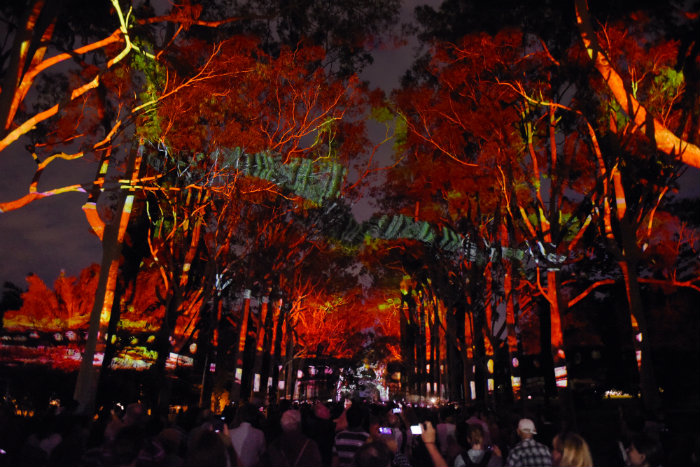
Image: Boorna Waanginy: The Trees Speak was a highlight of Perth Festival 2017, and returns in 2019. Photo: Toni Wilkinson.
Alison Croggon, writer, critic and co-founder of Witness Performance
‘How I select depends on the festival. I find the [Melbourne] Fringe Festival literally overwhelming: if I’m covering it, I generally choose a very few shows that catch my eye because I’m interested in the artists involved. But that means I miss out on discovering new talent. With the larger festivals, I can be much more comprehensive. I always see as much as I can get to. That depends where it is: at home in Melbourne I don’t have to choose a particular week. I always find it agonizing when I go interstate because there’s always something that looks amazing and that I’ll miss because I won’t be there. I research the artists if I don’t know of them already. And then I guess I pick on gut feeling: what looks most interesting. Sometimes I get it right, but I almost always miss something I should have seen.’
Henry Boston, Executive Director, The Chamber of Arts and Culture WA
‘Consuming a festival program is a little like approaching a menu written in a babel of languages and prepared by many different chefs. If you are lucky enough to know the work of many of the chefs then you tend to pick your favourites because you are interested to see what new dish he or she has prepared.
‘However there must always be room for unknown offerings that can excite and stretch the palate. Then there’s the desire to make sure you try all the cooking styles without getting festival indigestion.
‘I’ve known some approach their planning with military precision but that doesn’t allow enough opportunity to be in the moment, savour the experience and chew it over with friends newly met.
‘In summary, it’s a judicious blend of knowledge, experiment and flexibility. Stamina, water and plenty of vitamins would also help. Not that I necessarily follow my own advice.’
Wendy Martin, Artistic Director, Perth Festival (8 February – 3 March 2019)
‘You need to approach a festival brochure with a sense of adventure. In a major city festival, there will always be key, big name artists and it’s great to see what the masters are doing but the thrill is always in discovering something new. It’s my responsibility to dig below the surface. My colleagues around the world give me tips about works they rate. It pays to be informed. Research is important. I visit artists’ websites, read interviews and reviews and you can always gauge whether it’s of interest.’
Joseph Mitchell, Festival Director, OzAsia Festival (25 October – 11 November 2018)
‘At first glance of a festival program I am usually looking for how the overall design communicates the identity of a festival. Some of these first impressions can be somewhat subliminal and may include texture of the pages, busyness of the front cover and thickness of the overall brochure. These things can provide markers to the overall impression one may have when looking more closely, after unwrapping the plastic when it arrives in the mail.
‘A festival brochure can sometimes become overpopulated with too much information, too many messages, and too much graphic design, resulting in a loss of that wonderful opportunity to capture a clear visual picture of what the festival can be. In recent years I have become weary of too much text in a festival brochure. If something has [caught] my interest based on the artists involved, a dynamic image, and concise text with minimal adjectives, then the internet can do the rest if I want to know more about a particular show or artist.
‘The most important component of any festival brochure is the calendar of events. Once I have selected the key shows I am interested in, I use the calendar to see what else is on around the same time and will make selections based on that. This works for visiting festivals in other cities where one only has a few days but would like to get a broad sense of the festival outside of the key shows that initially sparked my interest.
‘Ticket prices are always listed on every page, but I also hunt around for special deals that can sometimes get lost at the back of a brochure. I don’t know why, but these are usually buried so deep in festival brochures they are behind pages of sponsor adverts when one would think that a primary objective of the brochure is to encourage audiences to buy tickets.’
Josephine Ridge, former Artistic Director, Luminato (6-24 June 2018)
‘I take a three pronged attack. First – renewing old friendships with the artists and companies I know and in whose work I am always interested. Looking at their dates and times give me the first foundation for my schedule with the shows I decide I will not miss.
‘Then I look at the artists of whom I have never heard. I want a festival to surprise me and to offer me the unexpected experiences. I may do some research at this point, but I also trust that if they are included in the program, my fellow Artistic Directors have good reason to do so. Then I add those dates and times into my schedule.
‘Finally I fill in the gaps. Festivals are about intensity and excitement and so I love to make the most of the experience. If there is a show or an exhibition or an event that makes sense of the time in between the performances I have decided to see then, into the schedule they go. If not, then inevitably I will head to the Festival Hub to share stories and hear about those other shows I should see.’
Nici Cumpston, Artistic Director, Tarnanthi Festival of Contemporary Aboriginal and Torres Strait Islander Art
‘I start off with a bit of a glance here and there and a flick through to see what I know and am interested in. So initially I am a bit willy-nilly. Then I start to freak out that I am going to miss out on something if I don’t have a proper look through, so I take more time and read up on the things that I am not so sure about, but that seem somewhat interesting. Then I choose and book tickets for my absolute favourites, and schedule all of the other must do events in to my diary. Then I get busy and end up going to the paid events and only one or two of the scheduled events in my diary. Sometimes at Womad I just walk in the general direction of the performance I want to see, lay on the grass and just let it all waft over me. Life is too short to rush around during a Festival.’
Deborah Stone, former editor, ArtsHub
‘I enjoy salivating at the delicious choices in a festival program but I also suffer from FOMO (Fear Of Missing Out) and have a busy life so choosing can be stressful. I like to work through an online program, checking artists’ sites or video excerpts for more information. First pass, I read everything – partly for the pleasure of learning what’s out there and partly to note ‘musts’ and ‘maybes’ on a spreadsheet. ‘Musts’ tend to be instinctive – they resonate emotionally or tick a box I’ve always wanted to see. ‘Maybes’ could be events I’m considering taking a risk on or something I know I will enjoy but are not exclusive opportunities. Second pass is a calendar juggling exercise. Then it’s a matter of balancing art forms, considering costs and consulting potential companions, which can sometimes push me to different choices.’
